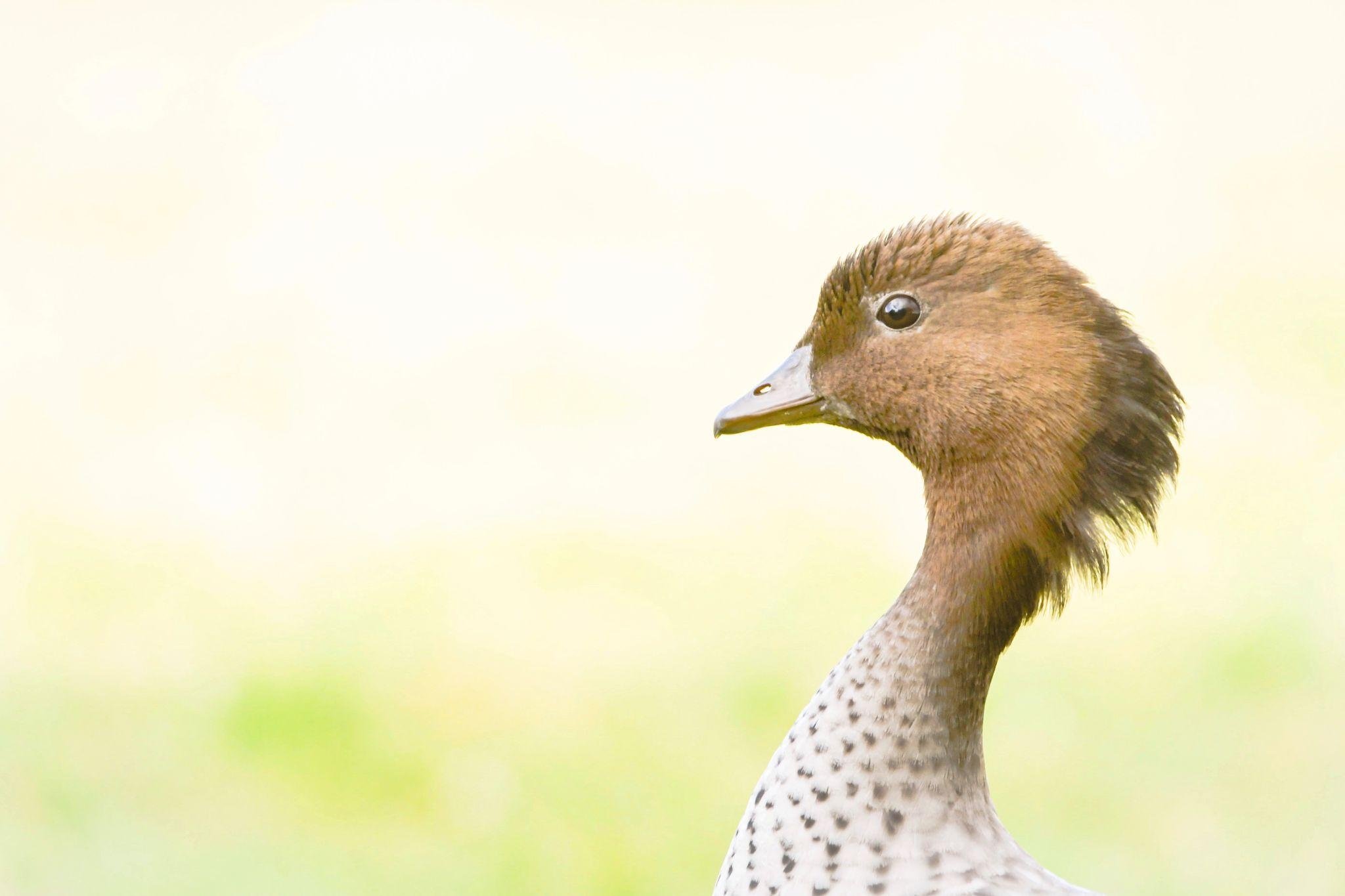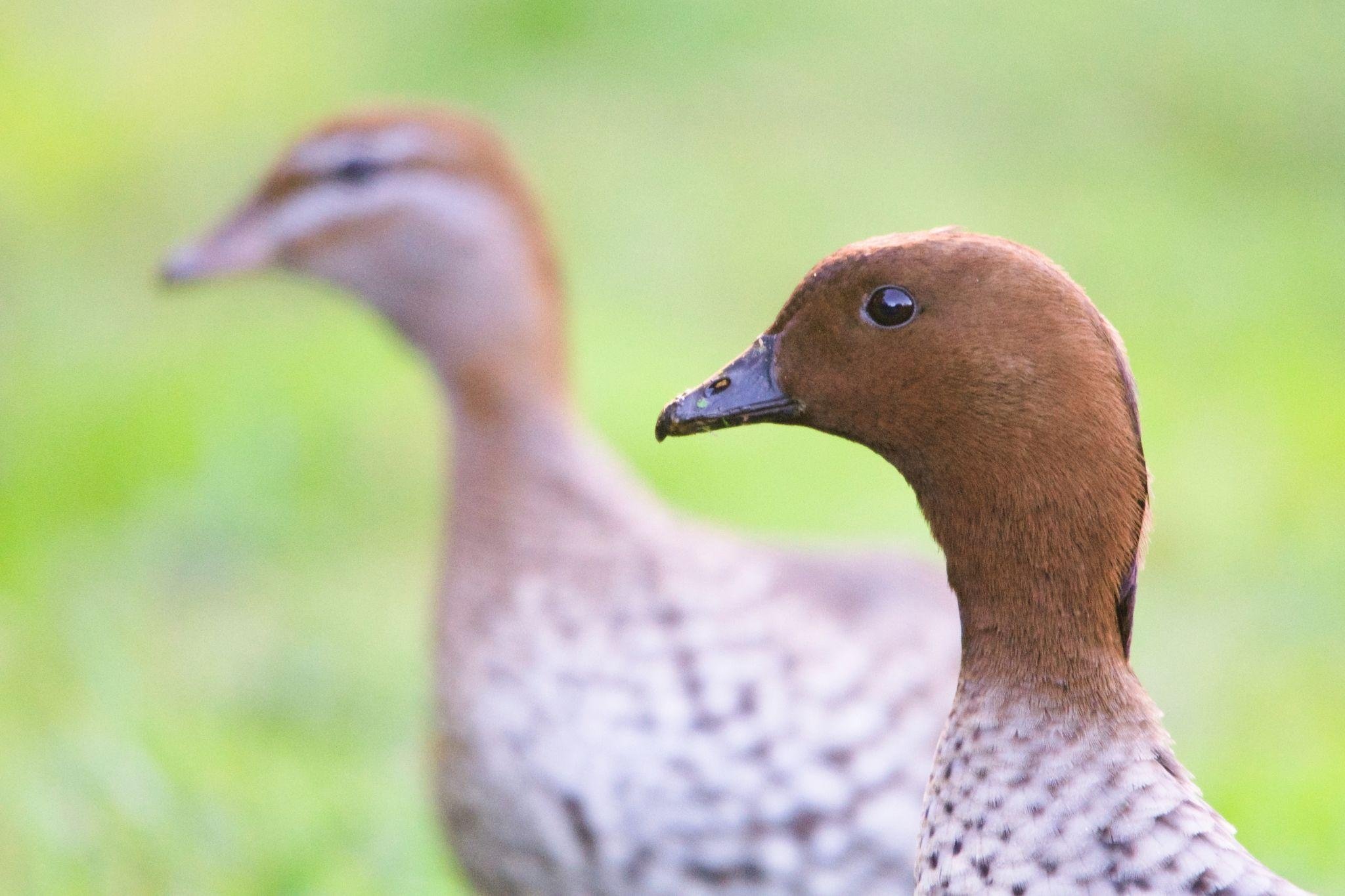By Nicholas Munday, Adelaide Urban Birding
This is the third instalment of the series, What Bird is That? in which we explore the many birds that call your Adelaide Park Lands home.
The subject of this issue is an abundant and (sometimes) adorable, endemic, Australian Wood Duck (Chenonetta jubata). Found across nearly the whole continent, except the driest deserts, these ducks are unmistakable in appearance, unlike any other duck in the country.
Sometimes called the Maned Duck or (erroneously) the Maned Goose on account of the crest of feathers on the nape of the male’s neck, its taxonomic placement within the waterfowl (family Anatidae) is not quite resolved, and it sits isolated as the sole member of the genus Chenonetta (which translates literally from Greek as ‘goose-duck’), although it is traditionally thought to be a member of subfamily Anatinae, the true ‘dabbling ducks’.
If this placement is correct, Australian Wood Ducks are no more closely related to geese than any other ‘conventional’ ducks found in Your Adelaide Park Lands, such as the introduced Mallard (Anas platyrhynchos) or the native Pacific Black Duck (Anas superciliosa).
Australian Wood Duck (male) displaying its erect ‘mane’ of feathers, Adelaide Botanic Garden (Park 11). Photo: Nicholas Munday (Adelaide Urban Birding)
While the similarity to geese may be superficial, Australian Wood Ducks are unmistakably goose-like, both in habit and appearance. These ducks can often be found together in large flocks as they graze prolifically on native and introduced grasses. They appear to have a fondness for closely manicured lawns, which they play no small part in keeping closely cropped through their insatiable appetite.
Their service as groundskeepers is not entirely without its pitfalls, however, as they also appear to have near constant gut movements, ‘fertilising’ new lawn in equal step with consumption. This is to stay, be careful to check for droppings when planning a picnic anywhere that Wood Ducks are present!
Australian Wood Ducks have a great fondness for grass, and particularly lawn, much to the chagrin of picnic goers. Photographed at Veale Gardens (Park 21). Photo: Nicholas Munday (Adelaide Urban Birding)
Australian Wood Ducks display a degree of sexual dimorphism. While both sexes are virtually identical from the neck down, the males have a uniform chestnut brown head, whereas the females are much paler with distinct white streaks extending from the bill and across the eyes. This same colouration also appears in their ducklings.
Australian Wood Duck (female) with ducklings, Victoria Park / Pakapakanthi (Park 16). Photo: Nicholas Munday (Adelaide Urban Birding)
The ducklings are unmistakable and about as adorable as they come; when newly hatched, they appear as nearly spherical brown and white balls of downy fuzz. Do not be fooled by their delicate demeanor, however, as these little fuzzballs are built tough.
Australian Wood Ducks are unusual among Australian waterfowl in forming nests not on rafts of floating vegetation within watercourses, but instead high in old-growth tree hollows. This suits the parents in keeping them well out of the way of potential predators and avoiding competition with other waterfowl, but it means the newly-hatched ducklings, little larger than a golf ball in size, have to contend with a terrifying drop of at least several metres in order to reach the safety of mum and dad. These are brave little birds indeed!
Australian Wood Duck duckling Victoria Park / Pakapakanthi (Park 16) Photo: Nicholas Munday (Adelaide Urban Birding)
Once out of the nesting hollow, the young ducklings are carefully and dutifully watched over by both parents, who will ferociously defend them from any potential threat, whether genuine or not: other ducks, domestic dogs, and passers by take note!
Breeding usually occurs between late winter and early summer, although in urban environments where food and water are plentiful, ducklings may be seen at almost any time of year. This year I spotted a family of more than half a dozen newly hatched ducklings in Veale Gardens (Park 21) in March! They are, however, far more plentiful during spring.
Australian Wood Duck duckling Victoria Park / Pakapakanthi (Park 16). Photo: Nicholas Munday (Adelaide Urban Birding)
Within Your Adelaide Park Lands, Australian Wood Ducks can be seen practically anywhere that has a good combination of manicured lawn and proximity to water, which includes the majority of parks and the city squares.
Look for them, in particular, around Botanic Park and the Adelaide Botanic Garden (Park 11), Possum Park / Pirltawardli (Park 1), Rymill Park / Murlawirrapurka (Park 14), Victoria Park / Pakapakanthi (Park 16), and the aforementioned Veale Gardens (in Park 21).
Australian Wood Duck (male) in the Adelaide Botanic Garden (Park 11). Photo: Nicholas Munday (Adelaide Urban Birding)
Nicholas Munday is an Environment and Planning Lawyer with degrees in Law and Science (Evolutionary Biology and Ecology) from the University of Adelaide. He has a strong interest in biodiversity conservation and runs the ‘Adelaide Urban Birding’ Instagram (@adelaideurbanbirding) account dedicated to his photography of native birds in the Adelaide Metropolitan area.
In his free time, Nicholas is well-known in the Adelaide choral music and theatre communities, and also enjoys bushwalking, writing, and (of course) photography.










